The tragic legend of the "Dumpling Festival" - Koon Yew Yin
Koon Yew Yin
Publish date: Mon, 14 Jun 2021, 11:10 PM
Today is the 5th day of the 5th month according to the Chinese calendar. It is the dumpling festival. You may like to know the tragic legend.
Like many traditional Chinese cuisines, the Chinese rice dumpling was created in honour of a legendary figure in China's history: the poet Qu Yuan (340 B.C. to 278 B.C.)
Famous for pioneering the art in ancient China, Qu Yuan was also a beloved minister and a former advisor to the King. But he was banished by the King after corrupt officials slandered Qu Yuan's name. Even in exile, Qu Yuan continued to write some of the greatest poetry in Chinese literature expressing concern for his country and people. But unfortunately, his home town was invaded in 278 B.C.
Stricken with grief, Qu Yuan drowned himself in the famous Ni Lo River. Although the people rushed to the river to rescue their beloved minister, they were too late.
Instead, they furiously threw packets of steamed rice wrapped in leaves to prevent the sea creatures from consuming Qu Yuan's body. Since then, it become customary for Chinese families to enjoy rice dumplings in memory of Qu Yuan's legacy.
Known by many names in Southeast Asia depending on the region (Bak Chang in Malaysia and Singapore, Ba Chang in Thailand, and Pya Htote in Myanmar, just to name a few), these glutinous rice dumplings come in little triangle-shaped parcels wrapped in bamboo leaves.
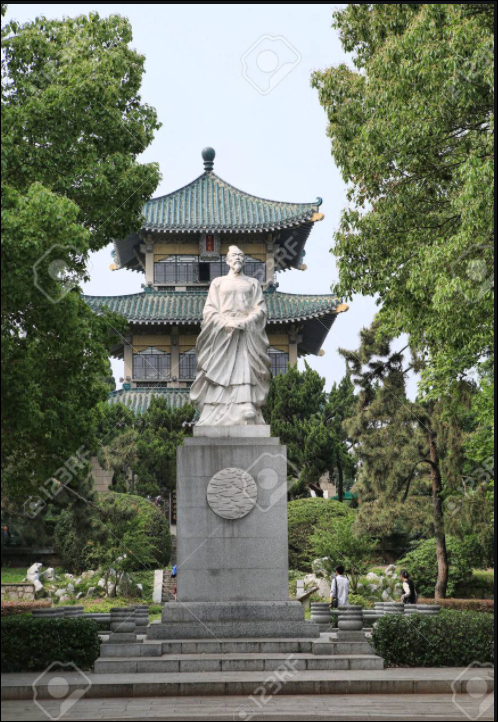
Each Chinese dialect group has their own variation of the treat and they differ through the ingredients used and even the colour. Very generally, people in the Northern parts of China prefer sweeter ZongZi while Southern parts prefer a more savoury flavour. Sweeter glutinous rice dumplings are made using ingredients such as red beans and dates, while savoury ZongZi are made using salted pork, dried shrimp, and minced meat.
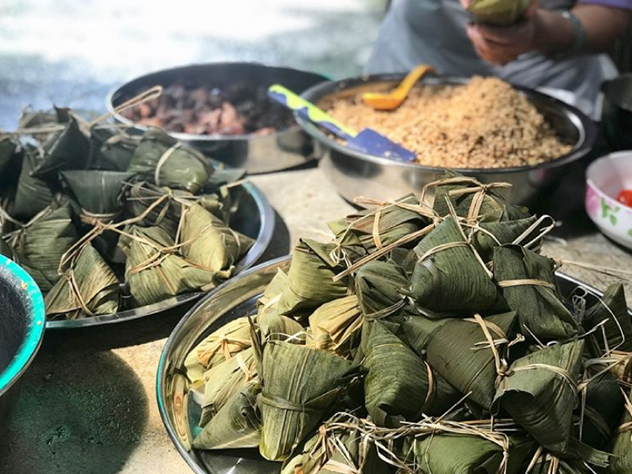
The Legends Behind the Dragon Boat Festival
Celebrated on the fifth day of the fifth month of the Chinese calendar, Duanwu Jie honors storied history with culinary treats.
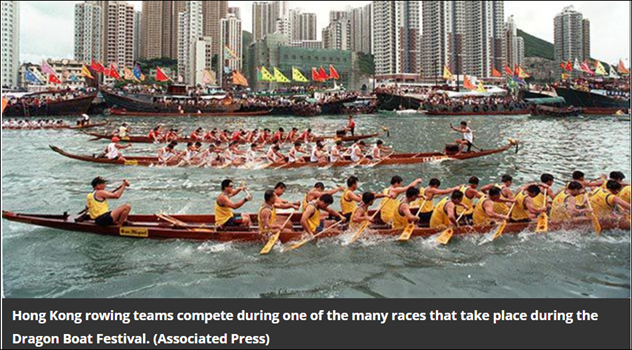
There are many competing explanations for Duanwu Jie, the Dragon Boat Festival, which falls on the fifth day of the fifth month of the Chinese lunar calendar—this year, May 28. All involve some combination of dragons, spirits, loyalty, honour and food—some of the most important traditions in Chinese culture. The festival’s main elements—now popular the world over—are racing long, narrow wooden boats decorated with dragons and eating sticky-rice balls wrapped in bamboo leaves, called zongzi in Mandarin, and jung in Cantonese.
Qu Yuan, an advisor in the court of Chu during the Warring States period of ancient China who was exiled by the emperor for perceived disloyalty. Qu Yuan had proposed a strategic alliance with the state of Qi in order to fend off the threatening state of Qin, but the emperor didn’t buy it and sent Qu Yuan off to the wilderness. Unfortunately, Qu Yuan was right about the threat presented by the Qin, which soon captured and imprisoned the Chu emperor. The next Chu king surrendered the state to their rivals. Upon hearing the tragic news, Qu Yuan in 278 B.C. drowned himself in the Miluo River in Hunan Province.
In the first origin story of zongzi, told during the early Han dynasty, Qu Yuan became a water spirit after his death. “You can think of it as a ghost, a spirit energy that has to be appeased. There are a variety of ways one might appease a ghost but the best and most enduring is to give it food,” explains Chittick.
For years after Qu Yuan’s death, his supporters threw rice in the water to feed his spirit, but the food, it was said, was always intercepted by a water dragon. (Master Chef Martin Yan, author and host of the pioneering Yan Can Cook TV show, suggests there may have been truth to this: “Some fresh water fish—like catfish—grow so huge that the Chinese considered them dragons.”) After a couple of centuries of this frustration, Qu Yuan came back to tell the people to wrap the rice in leaves, or stuff it into a bamboo stalk, so the dragon couldn’t eat it. It was only generations later that people began to retroactively credit Qu Yuan’s erstwhile lifesavers with starting the rice-ball-tossing tradition.
To make sense of how the water dragon gets into the story, or indeed of the boats carved with dragons on them, we need to go back further in time—more than 6,000 years ago, the earliest dated figure of a dragon found within the boundaries of modern China. “One of the most important mythical creatures in Chinese mythology, the dragon is the controller of the rain, the river, the sea, and all other kinds of water; symbol of divine power and energy…. In the imperial era it was identified as the symbol of imperial power,” writes Deming An, Ph.D., a professor of folklore at the Institute of Literature, Chinese Academy of Social Sciences, in Beijing, and co-author of Handbook of Chinese Mythology. “In people’s imaginations, dragons usually live-in water and are the controllers of rain.”
More articles on Koon Yew Yin's Blog
Created by Koon Yew Yin | Jul 22, 2024
Recently one smart accountant pointed out to me that KP Property has millions of Redeemable Convertible Preference Shares (RCPS). This will affect its share price. I sold all my KPP shares to buy KSL.
Created by Koon Yew Yin | Jul 15, 2024
Currently Bahasa Melayu is taught in all Government sponsored schools. Bahasa Melayu is only good within Malaysia. All our overseas customers do not know Bahasa Melayu. I hope all our politicians...


Created by Koon Yew Yin | Jul 09, 2024
Created by Koon Yew Yin | Jun 28, 2024

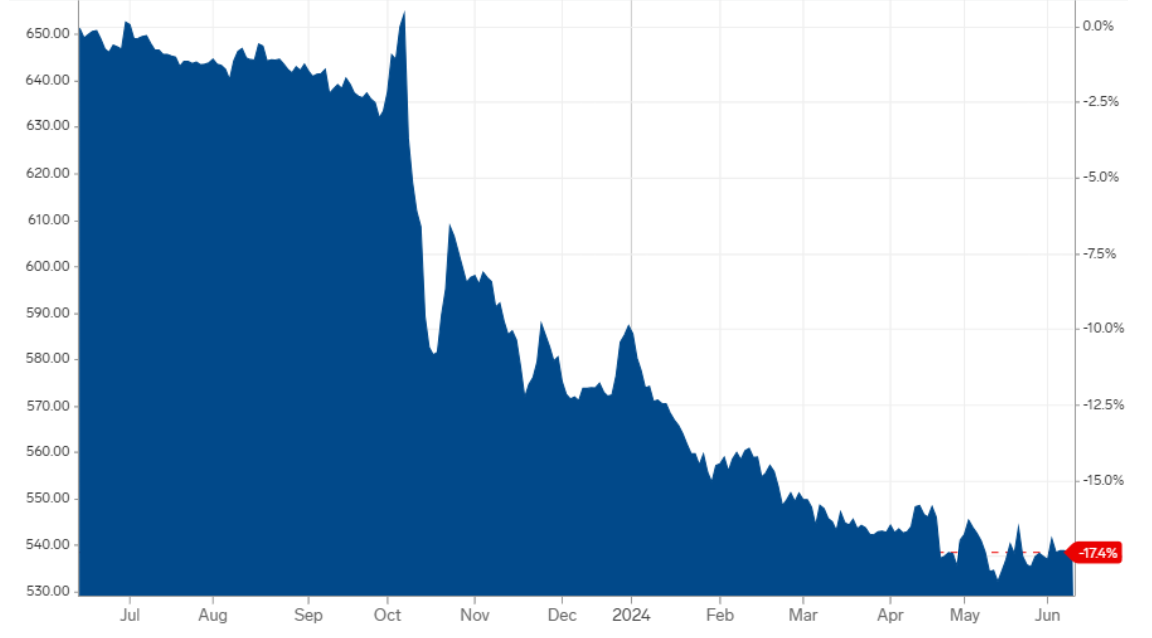
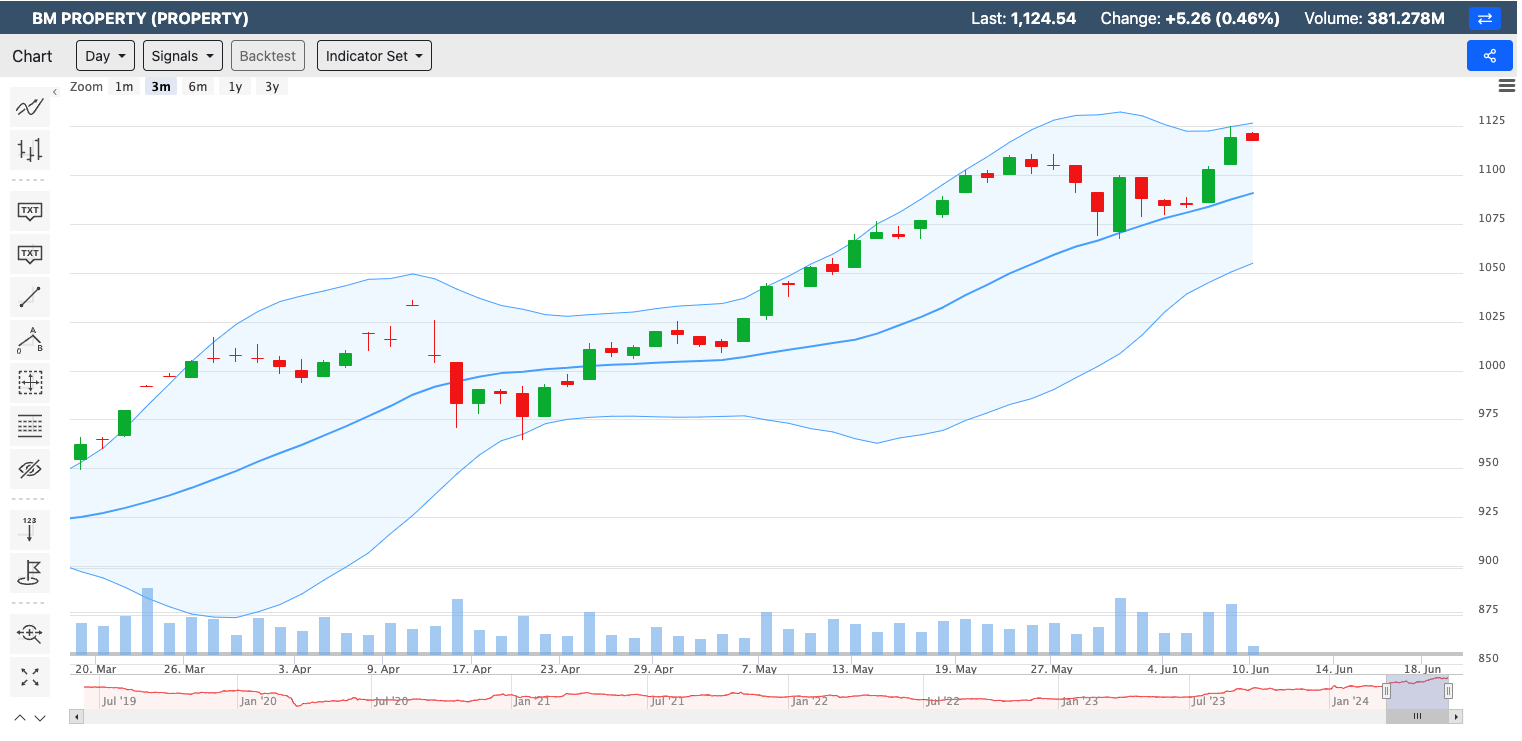




















khyeap
Good informative article.
2021-06-18 06:13